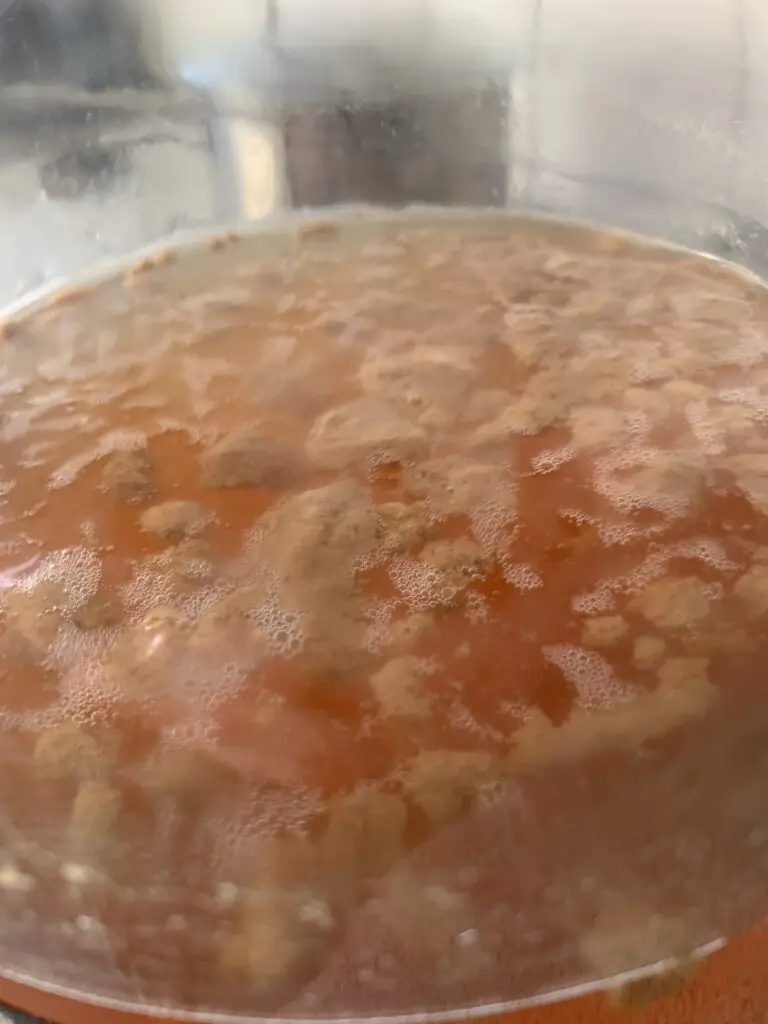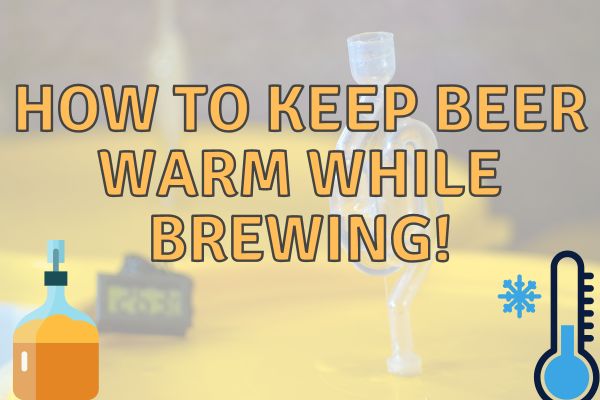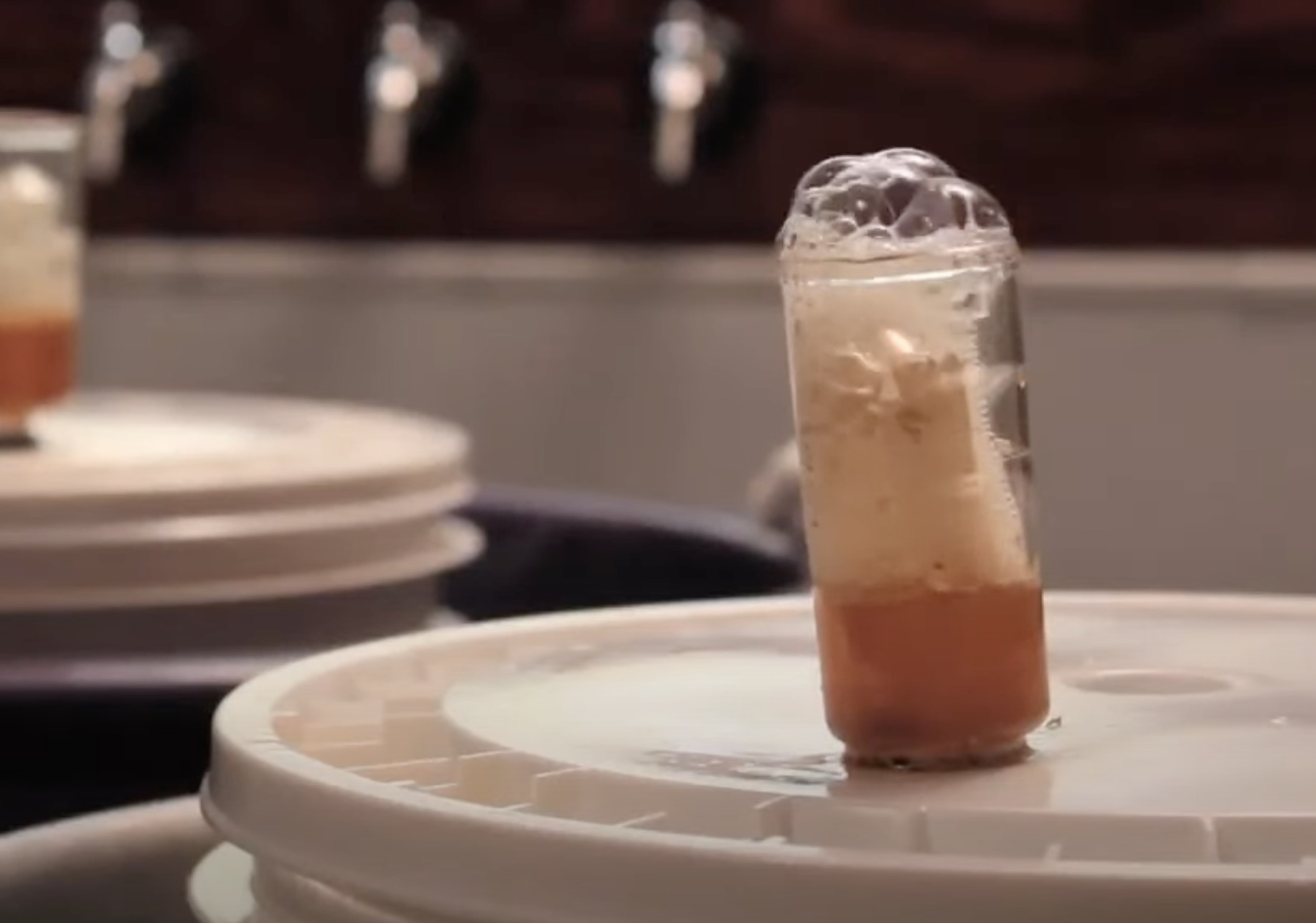As a seasoned brewer, I’ve had my fair share of krausen blowouts. This is a common occurrence, especially for beginners, but it is entirely avoidable.
To avoid krausen blowout, you need to understand what causes it and how to mitigate these factors.
This blog post will take you through the essential steps and best practices that will help you avoid this brewing mishap.
What is Krausen Blowout?
Before we delve into how to avoid krausen blowout, it’s essential to first understand what krausen is.
Krausen blowout happens when the frothy layer, known as the krausen, formed during fermentation, overflows the fermenter. E.g. flows out through the airlock.
The krausen is a layer of yeast, proteins, and hop residue that forms on the surface of the beer during fermentation.
It is a natural part of brewing, but when it becomes too vigorous and overflows, it results in a messy, sticky situation that can potentially ruin your batch of beer.
Why Does Krausen Blowout Happen?
Krausen blowout typically happens due to one or more of these three factors: overfilling the fermenter, vigorous fermentation, and high fermentation temperatures.
Overfilling the fermenter leaves little headspace for the krausen to expand, forcing it out of the fermenter. Vigorous fermentation, on the other hand, causes a larger than normal krausen that can overflow the fermenter.
Lastly, high fermentation temperatures increase the rate of fermentation, leading to a rapid formation of krausen that can cause a blowout.
Using the Right Size Fermenter
One of the simplest ways to avoid krausen blowout is to use the right size fermenter. The general rule of thumb is to use a fermenter that is at least 25% larger than the volume of wort you’re fermenting.

For example, if you’re fermenting 5 gallons of wort, you should use a fermenter that can hold at least 6.25 gallons. This leaves enough headspace for the krausen to expand without overflowing.
Controlling Fermentation Temperature
As mentioned earlier, high fermentation temperatures can lead to vigorous fermentation and larger krausen.
Controlling the fermentation temperature is therefore crucial in preventing krausen blowouts.

Each yeast strain has an optimal temperature range for fermentation. Staying within this range not only prevents blowouts but also ensures that the yeast produces the desired flavors and aromas.
Using Fermcap-S
Fermcap-S is a silicone-based product that reduces the surface tension of the wort, preventing the formation of large bubbles that contribute to krausen blowout. Adding a few drops of Fermcap-S to your wort before fermentation can help prevent blowouts.
However, it’s important to note that Fermcap-S is not a substitute for proper fermentation temperature control or using the right size fermenter.
Using a Blow-Off Tube
A blow-off tube is a larger version of an airlock that allows excess krausen to escape the fermenter safely. Using a blow-off tube is a great way to prevent krausen blowout, especially during the first few days of fermentation when the krausen is at its peak.
Simply replace the airlock with a blow-off tube that leads into a container of sanitizing solution. Any excess krausen will be safely directed into the container, preventing a messy blowout.
Conclusion
There you have it – the steps and best practices to avoid krausen blowout. Here are the key takeaways:
1. Krausen blowout is the overflow of the frothy layer formed during fermentation.
2. It is primarily caused by overfilling the fermenter, vigorous fermentation, and high fermentation temperatures.
3. Using a fermenter that is at least 25% larger than your volume of wort can help prevent blowouts.
4. Controlling the fermentation temperature is crucial in preventing blowouts.
5. Fermcap-S can be used to reduce the formation of large bubbles that contribute to blowouts.
6. A blow-off tube allows excess krausen to escape the fermenter safely.
7. Avoiding krausen blowout will prevent a messy situation and potential batch ruin.
8. Proper brewing practices are essential for a successful brewing process.
9. Each yeast strain has an optimal temperature range for fermentation.
10. The first few days of fermentation are crucial as the krausen is at its peak.
From my personal experience, I can attest that following these practices significantly reduces the chances of experiencing a blowout. It’s all about understanding the brewing process, taking the right precautions, and keeping an eye on your fermenting beer. Happy brewing!
FAQs
What is the krausen in a fermenter?
The krausen in a fermenter is the foamy layer that forms on top of the beer during fermentation. It is composed of yeast, proteins, and other compounds that are released as the yeast consumes sugars and produces alcohol and carbon dioxide.
Should you remove krausen?
Yes, it is generally recommended to remove krausen during the fermentation process.
Does the krausen always fall?
Yes, the krausen, which is the foamy layer that forms on top of fermenting beer, typically falls after a certain period of time.
What is the krausen method?
The krausen method is a technique used in brewing beer. It involves adding a small amount of actively fermenting beer, known as krausen, to a batch of beer that is still in the fermentation stage. This helps to provide additional yeast and nutrients to the new batch, promoting a healthy fermentation process and improving the overall flavor and quality of the beer.
What is the krausen process?
The krausen process refers to the foamy layer that forms on top of fermenting beer. It is a natural part of the fermentation process where the yeast consumes sugars and produces carbon dioxide and alcohol. The krausen is a visible sign that fermentation is actively taking place.
How long does it take for krausen to fall?
The krausen typically takes around 3 to 7 days to fall in a fermentation process.




